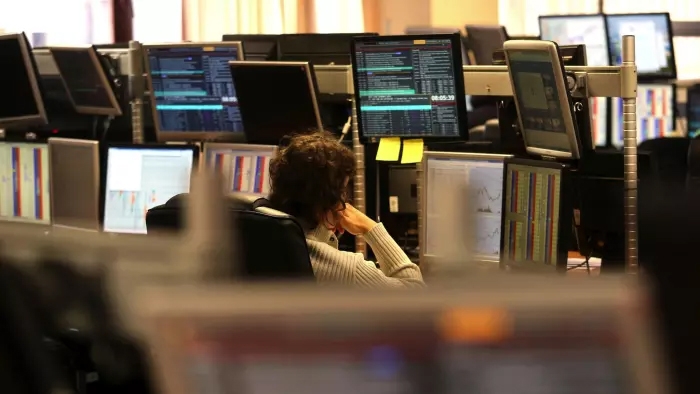
Global equity markets are higher, with optimism on the economic recovery and policy stimulus more than offsetting rising US-China tensions, with the latter more an influence on weaker NZD and AUD currencies, alongside further sign of China-Australian trade tensions.
After we went to print yesterday, there was talk of Trump making a decision on China by the end of the week, mulling sanctions on Chinese officials and firms over Hong Kong. This saw US equities weaken into the close and push the NZD down from its 11-week high.
In news overnight, the White House announced that it could no longer certify Hong Kong’s political autonomy from China. The move opens the door for possible tariffs on imports from Hong Kong, visa restrictions or asset freezes for top officials. China has previously warned it would retaliate if the US interfered in its affairs.
The equity market has taken the news in its stride, with US equities taking on a positive tone, more focused on the recovery story as economic activity rebounds following the easing of lockdown restrictions. Like yesterday though, the Healthcare and IT sectors have underperformed, with the latter more exposed to US-China tensions. The S&P500 currently sits 0.8% higher.
In other news, the European Commission has proposed a stimulus plan worth up to €750b made up of €500b worth of grants to EU member states and up to €250b of loans. Sources suggest that Italy and Spain would be the big winners, getting around €80b in grants under the proposal. The plan is not a done deal, being subject to agreement from all 27 EU members and will be discussed at the next summit on 19 June. The so-called “frugal four” – Austria, Denmark, the Netherlands and Sweden have previously disagreed that grants should be part of the package. After the announcement, the Austrian Chancellor said that “this is a starting point for the negotiations”, while Sweden’s EU Minister told reporters that his country won’t accept the plan as it stands.
Easier European fiscal policy is much needed, with ECB President Lagarde suggesting that the euro-area economy is faring worse than hoped, with the recession looking as bad as the ECB’s more pessimistic scenario, with GDP growth set to fall by 8-12%.
The EUR bounced higher after the headlines on the EU Recovery Fund, seeing it trade as high as 1.1030, before easing back below 1.10.
After a soft session during NZ trading hours, the NZD got a bid, reaching a fresh high of 0.6233 overnight, but it has since retreated back down to 0.6170. As well as the White House announcement on Hong Kong, the NZD has been dragged down by a weaker AUD. This followed an FT report that China is expected to promote the use of domestic coal by tightening import rules, starting with shipments from Australia. Traders said China’s main state planning body, the National Development and Reform Commission (NDRC), had instructed five large state-owned utility companies not to buy Australian thermal coal. This report follows other signs of increased China-Australia trade tensions, with barley and meat exports under the spotlight.
After touching a fresh multi-month high of 0.6680, the AUD lost over 1 cent before recovering to around the 0.66 mark. NZD/AUD pushed up to 0.9370 but has since scaled back that move down to 0.9340, marking it only 10pips higher than this time yesterday.
GBP has also underperformed, not helped by the political scandal around Dominic Cummings, with calls for PM Johnson to sack his chief strategist after he broke lockdown rules. GBP is down 0.7% for the day to 1.2250.
Global rates are down slightly, reversing some of the upward pressure over the previous session, with the US 10-year Treasury yield down 2bps to 0.67%. The rate has climbed to as high as 0.73%, ahead of the White House announcement on Hong Kong.
NY Fed President Williams said that the FOMC was “thinking very hard” about targeting specific Treasury yields to keep them low, analysing how the policy has worked in other countries. The RBA’s yield-curve-control policy has been very successful, particularly when judged against the RBNZ’s QE policy. The RBA hasn’t needed to buy any bonds over the past couple of weeks to keep the 3-year rate at 0.25%, while the RBNZ is still near full-throttle, buying more than $1b of bonds per week, more than the government is currently issuing.
With global forces in the driving seat, NZ government rates were up over 5bps across the curve, with a rise of 8bps for the 2037 bond.
Finally, oil is weaker after Russia looks determined to scale back on output reductions from July, in accordance with the OPEC+ supply agreement, according to sources. The market had been hoping that production cuts would be continued, given their success in holding up oil prices. Brent crude is down over 4% to USD34.50.
In the day ahead, the ANZ updates its May business outlook survey, which is likely to show some improvement from the early estimates, as NZ’s economy restarted after the lockdown. We suspect that the European and US data releases tonight will continue to be ignored by the market.

We welcome your comments below. If you are not already registered, please register to comment
Remember we welcome robust, respectful and insightful debate. We don't welcome abusive or defamatory comments and will de-register those repeatedly making such comments. Our current comment policy is here.